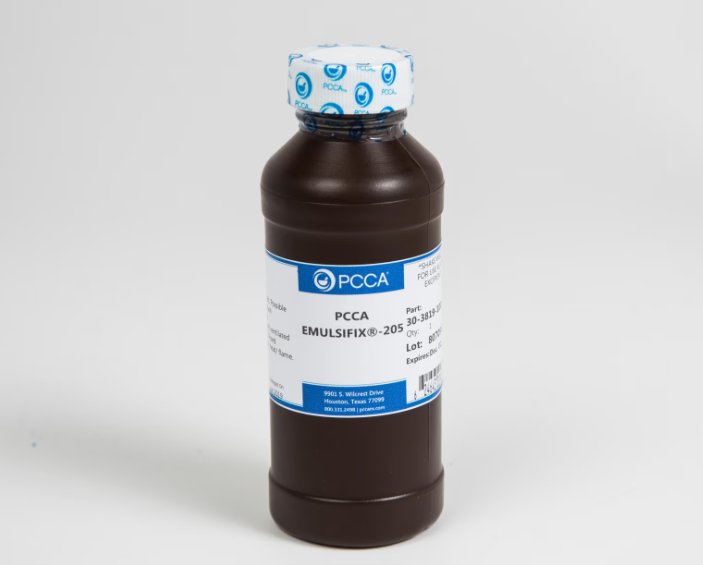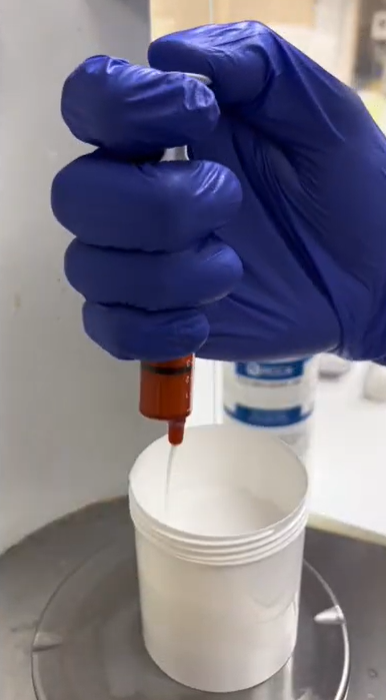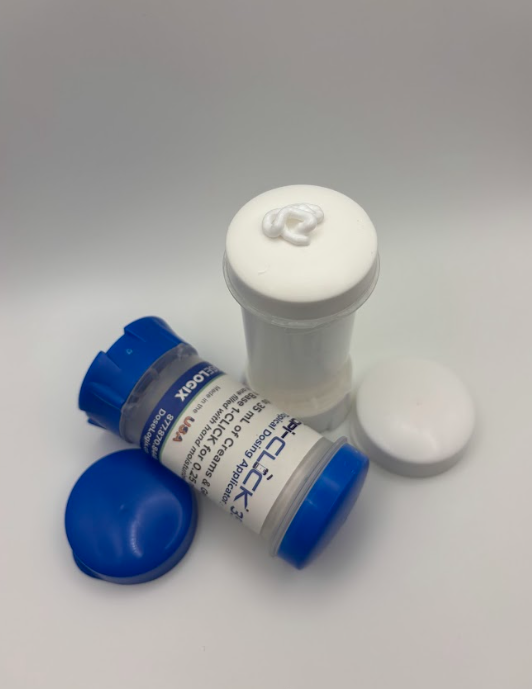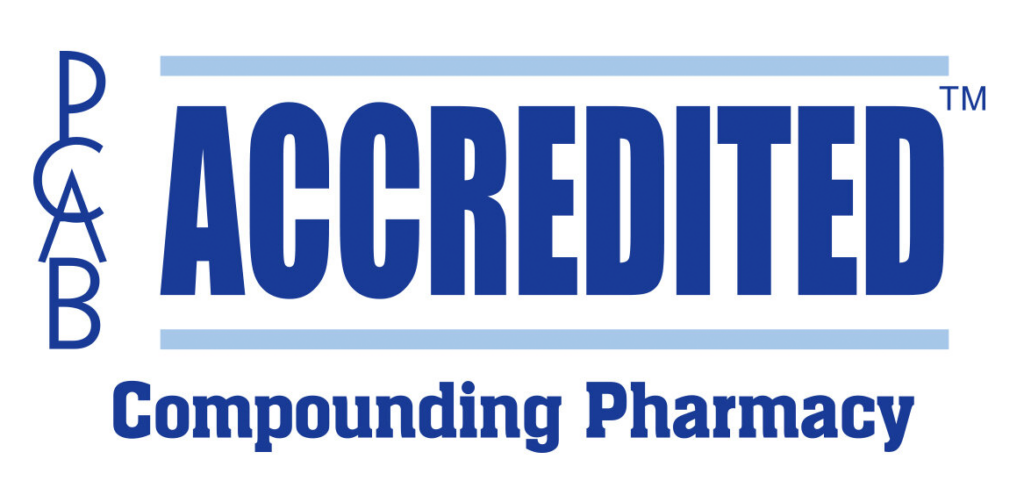Creating Compounded Gels and Creams: How Emulsifix May Make a Difference for Michigan Patients
Compounded topical formulations — such as gels and creams — have emerged as a preferred medium for targeting health conditions directly at the affected area. A critical component in formulating these medications is Emulsifix-205, an advanced emulsifying agent that may significantly enhance the quality and efficacy of compounded preparations.
As one of the few PCAB-accredited pharmacies in Michigan since 2007, Healthway Compounding Pharmacy continues to stay at the forefront of pharmaceutical innovation, serving patients across the state, like Upper Peninsula, the Thumb, and Northern Michigan — including Alpena, Traverse City, and Sault Ste. Marie.
Learn more about Emulsifix-205 and expert insight into how and why it’s prescribed by Michigan practitioners.
What is Emulsifix-205?
Emulsifix-205 is a proprietary emulsifier and thickener designed to simplify the creation of both oil-in-water and water-in-oil emulsions.
Its versatility makes it ideal for compounding pharmacists looking to deliver high-quality, stable topical medications.

- Easy to work with across various pH ranges (2–12)
- Stable even in high-salt environments
- Compatible with a wide array of APIs, including NSAIDs, neuropathic agents, and hormones
- Ideal for use in creams, gels, lotions, and even ointments
Source: PCCA
What Is an Emulsifier and Why Is It Important in Topical Compounding?
In pharmaceutical compounding, an emulsifier is a substance used to help blend oil and water-based components into a uniform mixture. Without an emulsifier, these components naturally separate, leading to an unstable product. In topical formulations, emulsifiers may help ensure a consistent delivery vehicle by supporting the physical structure of the preparation.
Emulsifiers serve several functional roles:
- Supporting a uniform distribution of active pharmaceutical ingredients (APIs)
- Helping to prevent phase separation over time
- Influencing texture and spreadability on the skin
- Potentially improving the handling and compounding process
A stable and consistent topical base may contribute to better application and ease of use for patients. However, individual experiences may vary, and not all formulations are appropriate for every condition or person.
Potential of Emulsifix in Compounding
Although each patient and formulation is unique, Emulsifix-205 may offer the following potential benefits in compounded topical medications:

1. Emulsion Stability
One of the primary functions of an emulsifying base is to help prevent the separation of oil and water components in a preparation. Emulsifix-205 is formulated to promote emulsion stability across varying environmental conditions, which may help maintain the product’s consistency throughout its intended use period.
2. Patient-Friendly Texture
The texture of a compounded topical formulation may influence patient satisfaction and adherence. Emulsifix-205 is formulated to provide a non-greasy, smooth feel, which some patients may find preferable, especially in long-term use scenarios.
3. Skin Tolerability
Some traditional topical bases may lead to irritation, particularly in pediatric or sensitive-skin populations. Emulsifix-205 has been formulated with tolerability in mind. However, individual patient response can vary, and all compounded products should be evaluated for tolerability on a case-by-case basis.
4. Broad API Compatibility
Emulsifix-205 is often selected because it may be used with a wide variety of APIs, including:
- Hormonal therapies (e.g., estrogen, progesterone, testosterone)
- Neuropathic agents
- Anti-inflammatory compounds
- Local anesthetics
- Antifungals and antimicrobials
Let’s explore deeper into the clinical applications of Emulsifix.
Clinical Applications of Emulsifix-Based Compounded Formulations
Emulsifix may be a game changer in clinical settings across a wide range of conditions. Here are some of the most common applications seen in practice:
Pain Management
Topical analgesics (e.g., ketamine, lidocaine, gabapentin, amitriptyline)
Neuropathic pain relief formulations
Arthritic joint and muscle pain creams
Hormone Replacement Therapy (HRT)
Custom compounded estrogen, progesterone, and testosterone creams for men and women
Useful for post-menopausal patients or individuals with hormone imbalance
Dermatological Therapies
Psoriasis and eczema formulations with corticosteroids and moisturizers
Antifungal or antibacterial creams for infected skin lesions
- Scar medication blends using verapamil or onion extract derivatives

Pediatric Compounding
Diaper rash creams with zinc oxide, hydrocortisone, and antifungals
Transdermal nausea and pain medications for non-oral administration
Wound and Burn Care
Compounded silver sulfadiazine and other topical antimicrobials in a stable base
Aloe, lidocaine, and anti-inflammatory blends for wound healing
Who Prescribes Emulsifix-Based Compounded Medications?
Many medical professionals across Michigan and beyond rely on compounding pharmacies like Healthway to provide personalized care when commercially available medications fall short.
Physicians
Family medicine, internal medicine, and geriatric specialists frequently request compounded topicals for older patients or those on multiple medications.
Pain Management Specialists
These providers prescribe multi-ingredient topical analgesics to minimize systemic side effects and avoid opioid use.
Dermatologists
Emulsifix allows them to combine medications for acne, rosacea, psoriasis, and infections in one elegant formulation.
Pediatricians
Often require compounded topicals due to the limited availability of commercially prepared doses suitable for children.
Functional and Integrative Medicine Practitioners
Use Emulsifix to compound bioidentical hormone therapy and other holistic options tailored to patient needs.
OB/GYNs and Endocrinologists
Frequently prescribe topical hormone therapies, especially when patients are sensitive to oral administration or need localized options.
What Studies are Saying
Explore research supporting use of emulsifiers:
“Functions of Mixed Emulsifiers and Emulsifying Waxes in Dermatological Lotions and Creams”
Published in: Colloids and Surfaces B: Biointerfaces, 1996.
Summary: This study examines how mixed emulsifiers contribute to the stability and texture of dermatological creams, highlighting the importance of selecting appropriate emulsifying agents for effective formulation. Read Article
“Assessing and Predicting Physical Stability of Emulsion-Based Drug Products: A Critical Review”
Published in: Journal of Pharmaceutical Sciences, 2023.
Summary: This review provides insights into the factors affecting the physical stability of emulsions in pharmaceutical products, emphasizing the role of emulsifiers in maintaining emulsion integrity. Read Article
“Emulsions and Microemulsions for Topical and Transdermal Drug Delivery”
Published in: Handbook of Non-Invasive Drug Delivery Systems, 2010.
Summary: This chapter discusses the formulation of emulsions and microemulsions for topical applications, focusing on how emulsifiers aid in creating stable and effective drug delivery systems. Read Article
“Improving Emulsion Formation, Stability and Performance Using Mixed Emulsifiers: A Review”
Published in: Advances in Colloid and Interface Science, 2017.
Summary: This article reviews how combining different emulsifiers can enhance the formation and stability of emulsions, which is crucial for the performance of topical creams. Read Article
“The Effects of Emulsifiers and Emulsion Formulation Types on Dermal and Transdermal Delivery”
Published in: Dermatopharmacology and Skin Physiology, 2024.
Summary: This study explores how various emulsifiers and emulsion types influence the delivery of active ingredients through the skin, providing insights into formulation strategies for enhanced efficacy. Read Article
“The Effect of Process Parameters on the Microstructure, Stability, and Sensorial Properties of an Emulsion Cream Formulation”
Published in: Pharmaceutics, 2024.
Summary: This research investigates how different processing parameters impact the microstructure and stability of emulsion creams, highlighting the critical role of emulsifiers in achieving desired product characteristics. Read Article
Why This Matters to Michigan Patients
Patients across Northern Michigan — from Mackinaw City to Escanaba — often face challenges accessing specialized medications. Whether it’s due to allergies, absorption issues, or side effects from commercial drugs, compounded topical medications using Emulsifix provide:
- Targeted relief with fewer side effects
- Custom dosing and combination therapy
- Improved medication adherence thanks to enhanced texture and absorption
- A lifeline for patients with complex or rare conditions
PCAB Accreditation: A Mark of Quality and Safety
Healthway Compounding Pharmacy is proud to be the first pharmacy in Michigan to earn PCAB accreditation, an important credential that we have maintained since 2007.
What Is PCAB Accreditation?
The Pharmacy Compounding Accreditation Board (PCAB) is an organization that evaluates compounding pharmacies to ensure they meet strict quality and safety standards. PCAB accreditation is a voluntary process that involves:
- Third-party inspections and documentation reviews
- Evaluation of compliance with USP <795>, <797>, and <800> guidelines
- Continuous quality improvement and risk mitigation practices

Why PCAB Matters for Patients and Providers
When working with a PCAB-accredited pharmacy, patients and prescribers have greater confidence in the consistency, safety, and reliability of compounded medications. For communities across Upper Michigan, the Thumb, and Northern regions, this assurance may be particularly important when access to specialized care is limited.
Michigan’s Compounded Cream Compounding Pharmacy
At Healthway Compounding Pharmacy in Saginaw, we’ve seen firsthand how innovations like Emulsifix-205 change lives.
As one of Michigan’s most trusted compounding pharmacies — serving communities across Michigan — we remain committed to the art and science of personalized medication.
Whether you’re a provider seeking innovative medications or a patient looking for options when standard medications don’t work, Emulsifix-powered topical preparations offer a reliable, research-backed, and patient-centered approach to care.

Want to learn more about how compounded medications may help?
Contact Healthway Compounding Pharmacy or visit us in Saginaw to speak to a pharmacist today.
References
Becher, P. (1996). Functions of mixed emulsifiers and emulsifying waxes in dermatological lotions and creams. Colloids and Surfaces B: Biointerfaces, 6(1-2), 33–42. https://www.sciencedirect.com/science/article/pii/S0927775796038460
Chang, R. K., Raw, A., Lionberger, R., & Yu, L. (2023). Assessing and predicting physical stability of emulsion-based drug products: A critical review. Journal of Pharmaceutical Sciences, 112(4), 989–1004. https://www.sciencedirect.com/science/article/pii/S0022354923001144
Eccleston, G. M. (2010). Emulsions and microemulsions for topical and transdermal drug delivery. In M. Rathbone, J. Hadgraft, & M. Roberts (Eds.), Handbook of Non-Invasive Drug Delivery Systems (pp. 59–94). Elsevier. https://www.sciencedirect.com/science/article/pii/B9780815520252100034
Tadros, T. (2017). Improving emulsion formation, stability and performance using mixed emulsifiers: A review. Advances in Colloid and Interface Science, 247, 389–400. https://www.sciencedirect.com/science/article/pii/S0001868617303196
Schäfer-Korting, M., & Mehnert, W. (2024). The effects of emulsifiers and emulsion formulation types on dermal and transdermal delivery. In M. Schäfer-Korting (Ed.), Dermatopharmacology and Skin Physiology (pp. 305–320). Springer. https://link.springer.com/chapter/10.1007/978-3-662-45013-0_16
Krause, M., & Dietz, M. (2024). The effect of process parameters on the microstructure, stability, and sensorial properties of an emulsion cream formulation. Pharmaceutics, 16(6), 773. https://www.mdpi.com/1999-4923/16/6/773


